Charles Francis Le-Quelenec was born in October 1921 and was brought up in Guernsey (a fact given increased relevance later, as he had relatives in Normandy), and could speak fluent French. He joined the army soon after the outbreak of the Second World War, enlisting with the Hampshire Regiment. He transferred to the Royal Artillery in early 1940, where he remained for four years including service in North Africa, before beginning his Airborne career in early 1944.
He passed his parachute jump course in March 1944 and joined 12th (Yorks) Parachute Battalion as a Sergeant. As the Battalion prepared in Gloucestershire, as part of 6th Airborne Division for the planned invasion of North-west Europe, Sgt Le-Quelenec would be tasked as Jump Master from the Halifax bombers used for the drops in Normandy (the D-Day Op Order for 12th Bn records Sgt Le-Quelenec as Jump master for Aircraft No.185).
He jumped into action on the night of 5-6th June 1944 (D-Day) and later wrote vividly of his experiences, titled 'I was almost there' in The Uniform magazine. Sgt Le-Quelenec described the jump after the approach to the French coast, having seen the Landing flares of the Battalion Pathfinders (led by Sgt Bill Hulme) ahead:
'Everyone was sitting down, no doubt saying a prayer or two, when we felt the door open. The officer shouted "Action Stations", everyone jumped to their feet, and checked the belts were safely attached to the wire on the plane. "Go" shouts the officer, as he was jumping out, and every one else billowing out after him. The moon was out, it was a fine night, but damned flak was flying about from somewhere on the right[.] My parachute got peppered, my kit dangling below on a rope was cut clean in two. Parachute damage caused me to come down much faster, and eventually I crashed into an orchard at the rear of a large French house. [...] I felt terrific pain in my left shoulder and arm, and it wasn't until much later that I found I had fractured my scapula and torn out my left biceps.'
Despite his injuries, he took part in the unfolding battle. The unfamiliarity of Battle had lighter moments:
'[W]e crept out, across the road, into a field where we stopped, suddenly seeing three objects in the moonlight. We got ready to attack, when we found that it was three cows, who must have wondered what the hell we were doing out that time of night'
However, the conditions served to demonstrate the confusion of conflict, well illustrated when the gliderborne troops began to arrive in the early morning:
'What a sight and what a noise, bullets flying about, shells flying over, matchwood smashing as the gliders hit the deck, taking all before them. [...] Crowds of French people were out, including children[.] They did not know what to make of it. At first, they thought it was another German manoeuvre, but we reassured them that we were British, and had come to liberate them'.
Sgt Le-Quelenec's injuries prevented him from continuing to fight with the Battalion and he soon found himself in a medical station, run by the Red Cross, under regular sniper fire. After a short stay, the way was finally clear and he was extracted with other wounded men by LST, via a Duck landing craft, eventually reaching Southampton, where he was looked after at Netley Hospital.
After recovering sufficiently, he remained with the Battalion for a further two years, and left the services in November 1946. The comments on his release book described him as follows:
'A good NCO with good administrative abilities. He is hardworking, conscientious and willing. Above the average intelligence he has proved himself very trustworthy. Not afraid of responsibility, he shows initiative and good sense when given an individual task.'
After leaving the Army he worked in the Normanby Hall Steel Works, Scunthorpe and served on the County Council for Lincolnshire. With six children of his own he was very active in youth movements, and was one of the founding members of the Park Tigers Youth Football Club. The Club is still active today, playing at their home ground in Scunthorpe – Charles Le-Quelenec Park. He died in 1988.
Profile created for ParaData with information from Lt Col Jez Hair.
Read More
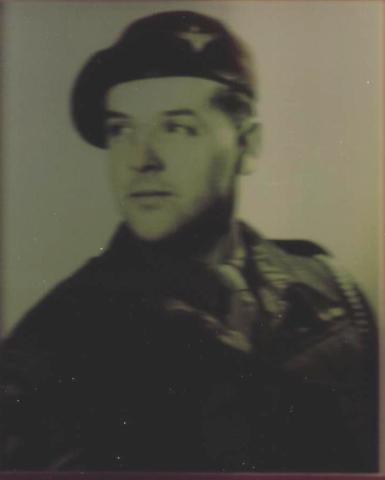
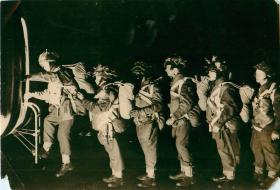
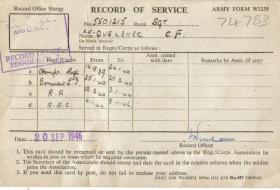
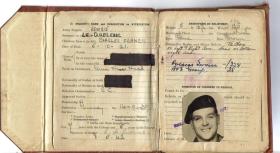
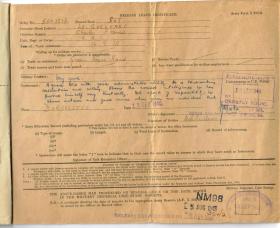
Latest Comments
There are currently no comments for this content.
Add Comment
In order to add comments you must be registered with ParaData.
If you are currently a ParaData member please login.
If you are not currently a ParaData member but wish to get involved please register.